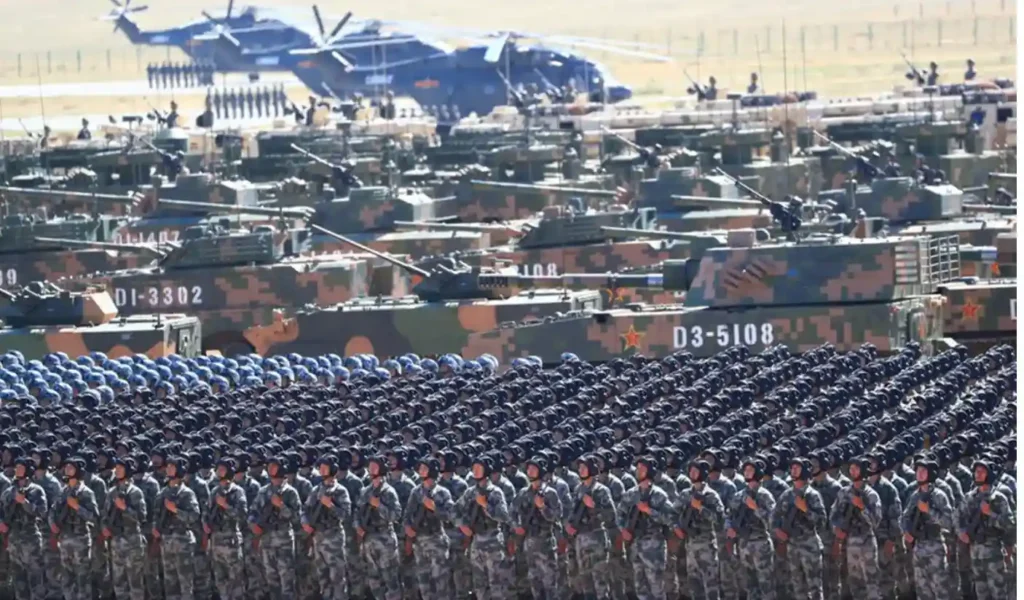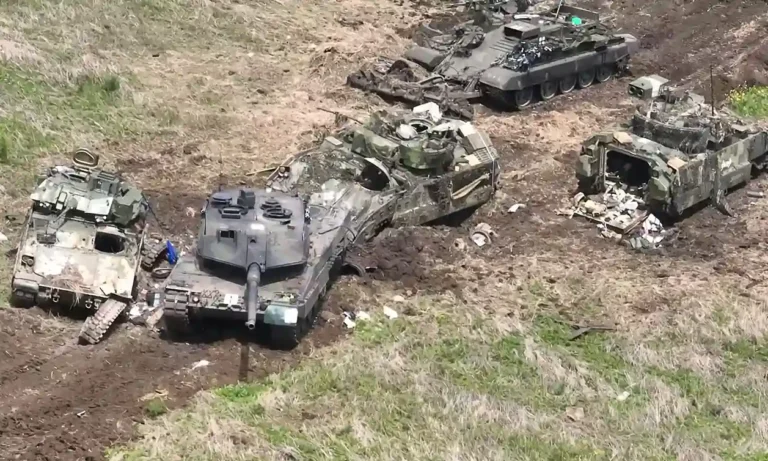Follow Us:
Share
Table of Contents:
Defense Feeds – As widely known that China’s military development has undergone an immense reform at the present stage.
They are focusing on realizing a powerful and prosperous China that is assembled with a world class military project. This notion is supported by the fact that the Chinese government is targeting to make its military powerful, efficient, more technologically advanced, with the ambition of becoming a top-tier military force in the next thirty years.
As a result, this modernization could secure China’s status as a great power and ultimately emerge as the preeminent force in the Indo-Pacific region and a great power rival to the U.S.

For this reason, today it seems to be review worth investigating on how such of this rapid change takes place toward China’s military modernisation starting the late 19th century to the current development?
How China’s Modernizing its Military defence?
We will begin this session by looking at glance on how china’s military history followed by the catalysation of PLA’s modernization.
The modern Chinese military commenced during the civil war (1927–1949) between Chinese Communist Party (CCP) forces and nationalist Kuomintang forces.
In 1949, the Communists took control of mainland China and founded the People’s Republic of China (PRC), forcing the China’s leadership to retreat to the island of Taiwan. The communist eventually won the Chinese Civil War, establishing the People’s Republic of China in 1949.
The PLA then experienced a massive reorganization, with the Air Force leadership structure being established in November 1949, followed by the Navy leadership structure in April 1950.
Artillery, armoured troops, air defence troops, public security forces, and worker–soldier militias all had leadership structures created by 1950. During the 1950s, the PLA with Soviet assistance began to transform itself from a peasant army into a modern one.
Since then, China has used nine different military strategies, which the PLA calls “strategic guidelines”. The most important came in 1956, 1980, and 1993.
At the beginning of 1980s, the PLA reoriented itself to modernization, improving its fighting ability, and to become a world-class force. However, What became the turning point is that the CCP witnessed two demonstrations of U.S. military power in its hemisphere: the Gulf War and the Taiwan Strait Crisis.
They were astounded by the sophistication of U.S. forces. By that chance, the Chinese leaders acknowledged that it was deficient in technology to undertake a modern attack and prevent foreign influence from intervening in the region.
Realising this, Officials initiated to launch an effort to catch up to elites’ militaries by escalating defence budget and creating programs to advance the military industry.
Another moment taken place when President Xi Jinping began his shift to advance china’s military defence. He has gone further in pushing military reforms than his predecessors, championing what he calls the Chinese Dream, an ambition to reclaim China’s great-power status.
He was further becoming the leaders of Central Military Commission with the ambition of regaining “World-Class Military” status to lead the Asia-Pacific and take part in global war by 2049. These factors seem to be the impetus to regain its military reformation.
Then the questioned might come to our mind what is the exact reformation has Jinping suggested?
The answer is that he concentrated on major structural changes. Among the most significant changes that he made was by joining the commands, cutting the personnel and increasing the civil-military collaboration. He also wants to turn the PLA into a major maritime power, rather than a primarily territorial military.
To emphases our point, it would be great to understand that Chinese modernization has captured all sectors of its military forces starting from its’ fleet size and capacities, tonnage of ships, military commercial shipbuilding and other different types of military projects.
To be precise, let’s take a lot on what is the exact modernisation?
The expansion of the People’s Liberation Army Navy (PLAN) has resulted in the increasing of fleet size and capabilities. According to research conducted by RAND, it was found that China’s surface fleet in 1996 consisted of 57 destroyers and frigates.
Fortunately, China’s fleet has dramatically increased in recent decades. The Chinese Navy has 335 ships as of 2019, making it larger compared to the 296 vessels of the US battle force.
The fleet sizes of other leading countries are relatively smaller. It can be seen that the British Royal Navy consists of 75 ships while the Royal Australian Navy has a fleet of 45 ships.
Furthermore, new ships are being launched to the sea at an incredible rate. Between 2014 and 2018, China launched more submarines, warships, amphibious vessels, and auxiliaries compared to the number of ships recently working in the individual navies of Germany, India, Spain, and the United Kingdom.
China has commissioned Eighteen ships in 2016 alone and at least another 14 were added in 2017. It can be predicted that china could have 425 battle force ships if it continues to commission ships at the same rate.
A primary focus of the PLAN’s modernisation, according to the Department of Defense (DoD), is modernizing and “augmenting its littoral warfare capabilities, especially in the South China Sea and East China Sea.” China has increased production of Jiangdao-class (Type 056) corvettes in response to this demand.
Moreover, the capabilities of the Chinese Navy are growing in other areas as well. China is manufacturing larger ships capable of accommodating advanced armaments and onboard systems. It led the world in the overall tonnage of ships it has on the sea.
The total tonnage of the ships launched by China between 2014-2018 was remarkable which is 678,000 tons – larger than the accumulated tonnages of the navies of France and Spain.
It is important to note that the PLAN’s total tonnage still less than half that of the US navy, the gap is estimated at about three million tons. This distinction is due to the US fielding 11 aircraft carriers, each displacing approximately 100,000 tons.
The rapid expansion of the PLAN has been supported by China’s capacity in growing shipbuilding. This advancement leads China to become commercial shipbuilding superpower.
In 2018, China overtook South Korea as the global leader in shipbuilding orders. China’s shipbuilding industry hold 43.9 percent of the global market in 2018, and 37.8 percent of global new orders in the first three quarters of 2019.
We wonder how this astonishing military development could take place, don’t we? To answer this inquiry, let’s take a look on the trend of China’s military expenses in comparison to other leading countries.
China announced a yearly defence budget modernizing its Military defence
In March 2021, China announced a yearly defence budget of RMB 1.36 trillion ($209.2 billion) marking a 6.8 percent increase from the RMB 1.27 trillion ($183.5 billion) spent in 2020. This continues a recent trend that has seen yearly percentage increases in spending fall to single digits.
Unfortunately, how much in total does China actually spends on its military is still widely debated. The Stockholm International Peace Research Institute (SIPRI) predicts the overall 2019 figure to be $240.3 billion and the International Institute for Strategic Studies (IISS) puts the number at $234 billion.
Even, the US Department of Defense (DoD) does not publicly provide a specific estimate but concludes that China’s 2019 military spending could be higher than $200 billion.
If we take a look on other notable military expenses, it can be noticed that the United States with the highest spending of $766.6 billion, Followed by China $244.9 billion and India $73 billion.
Russia is at the fourth ranks with total military defence of $66.8 billion. The United Kingdom, Saudi Arabia, France and Germany are at the same rate approximately at 60 to 50 billion. While Japan and South Korea at the rate of $48.2 billion and $46.1 billion respectively.
It can be concluded that the PRC’s defence budget has nearly doubled during the past 10 years. The data from 2010 through 2019 indicates China’s official military budget increase at an annual average of approximately 8 percent in inflation-adjusted terms.
For this reason, the PRC maintains its position as the world’s second-largest military spender after the United States with this year’s budget, which continues a 20-year trend of annual defence spending rises which is estimated to have totalled $252 billion in 2020.
As we come to an end review, let’s finish wrapping up the last question that comes to mind, so, what is the implication of this all to the global world? And how China projects their military globally?
Many experts believe that China intends to be the dominant military power in the Asia-Pacific, able to restrain and, if necessary, defeating the US in a future confrontation.
However, it is unclear whether China’s ultimate goal is to project dominance around the world in the same way that the United States does.
Additionally, it is also possible to earmark its overseas base in several countries just like firstly opened in Djibouti in 2017 and constructing another base in Cambodia, conducting an increasing number of joint military exercises, including with Pakistan, Russia, and perhaps some other leading countries. Let’s see what will happen next!
Share
Defense Feeds
Defense Feeds is publication focusing on informing, engaging, and empowering the world by providing accurate information from defense technology.
Powered by Defense Feeds © 2025 – All rights reserved.




